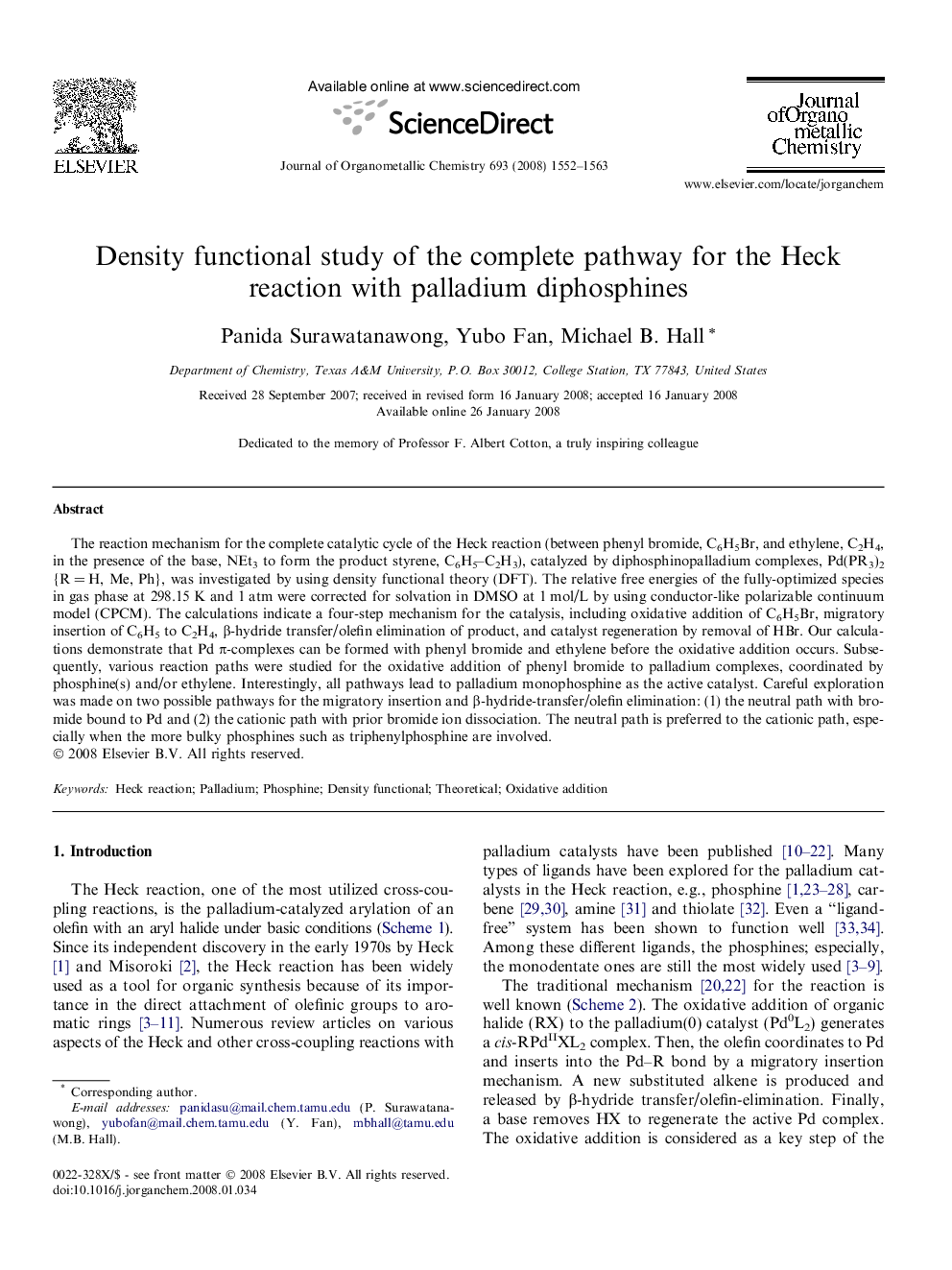| کد مقاله | کد نشریه | سال انتشار | مقاله انگلیسی | نسخه تمام متن |
|---|---|---|---|---|
| 1327992 | 1499948 | 2008 | 12 صفحه PDF | دانلود رایگان |

The reaction mechanism for the complete catalytic cycle of the Heck reaction (between phenyl bromide, C6H5Br, and ethylene, C2H4, in the presence of the base, NEt3 to form the product styrene, C6H5–C2H3), catalyzed by diphosphinopalladium complexes, Pd(PR3)2 {R = H, Me, Ph}, was investigated by using density functional theory (DFT). The relative free energies of the fully-optimized species in gas phase at 298.15 K and 1 atm were corrected for solvation in DMSO at 1 mol/L by using conductor-like polarizable continuum model (CPCM). The calculations indicate a four-step mechanism for the catalysis, including oxidative addition of C6H5Br, migratory insertion of C6H5 to C2H4, β-hydride transfer/olefin elimination of product, and catalyst regeneration by removal of HBr. Our calculations demonstrate that Pd π-complexes can be formed with phenyl bromide and ethylene before the oxidative addition occurs. Subsequently, various reaction paths were studied for the oxidative addition of phenyl bromide to palladium complexes, coordinated by phosphine(s) and/or ethylene. Interestingly, all pathways lead to palladium monophosphine as the active catalyst. Careful exploration was made on two possible pathways for the migratory insertion and β-hydride-transfer/olefin elimination: (1) the neutral path with bromide bound to Pd and (2) the cationic path with prior bromide ion dissociation. The neutral path is preferred to the cationic path, especially when the more bulky phosphines such as triphenylphosphine are involved.
Density functional calculations demonstrate that in the Heck reaction catalyzed by Pd phosphines Pd π-complexes can be formed with phenyl bromide and ethylene before oxidative addition. All reaction paths for the oxidative addition lead to palladium monophosphine as the active catalyst. For the rest of the Heck reaction, the neutral path is preferred to the cationic path (early loss of Br−).Figure optionsDownload as PowerPoint slide
Journal: Journal of Organometallic Chemistry - Volume 693, Issues 8–9, 15 April 2008, Pages 1552–1563